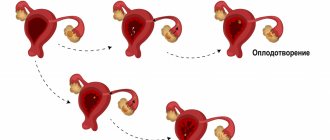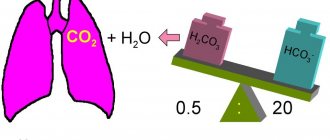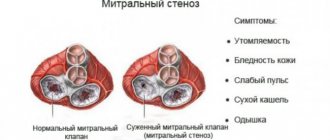Pulmonary hemorrhage is a clinical syndrome characterized by the entry of blood into the tracheobronchial tree, followed by its coughing up, as a result of various diseases. According to the Association of Thoracic Surgeons of Russia, the cause of pulmonary hemorrhage can be about 50 different diseases and syndromes. In the 20th century, in our country, the most common cause of pulmonary hemorrhage was tuberculosis, with various purulent-destructive processes in the lung tissue in second place. In the last 20-30 years, due to the improvement of the epidemiological situation, pulmonary hemorrhages caused by lung cancer have come into first place. At the same time, pulmonary hemorrhages in inflammatory diseases of the respiratory tract have not lost their significance, and quite often are the cause of emergency hospitalizations in surgical hospitals.
The frequency of pulmonary hemorrhages is 1–4% of all bleedings in patients hospitalized in multidisciplinary hospitals, while mortality, according to various authors, ranges from 30–80%. As stated above, pulmonary hemorrhage is not an independent pathology, but is considered as a consequence of various diseases, not only of the respiratory, but also of the cardiovascular systems, as well as anomalies and malformations. Currently, one of the main reasons for the development of pulmonary hemorrhage is tumor processes in the bronchopulmonary system. It should be noted that in 7-10% of patients with lung cancer, the first manifestation of the disease is pulmonary hemorrhage. As in cases with pulmonary hemorrhages of other etiologies, with malignant tumors of the lungs it can manifest itself as hemoptysis (the appearance of streaks or blood clots in the sputum) and coughing up a large volume of blood. At the same time, even minimal hemoptysis can serve as a harbinger of massive pulmonary hemorrhage.
A large number of different classifications of pulmonary hemorrhage have been developed in domestic and foreign literature. The classification proposed in 1990 by E.G. is of greatest importance in clinical practice. Grigoriev, which is based on the dependence of the volume of bleeding on the rate of blood loss.
| Degree | Volume of blood loss | |
| I | A | 50 ml/day |
| B | 50-200 ml/day | |
| IN | 200-500 ml/day | |
| II | A | 30-200 ml/hour |
| B | 200-500 ml/hour | |
| III | A | 100 ml at once |
| B | More than 100 ml and/or TBD obstruction, asphyxia | |
1.General information
Pulmonary hemorrhage is a highly lethal life-threatening condition that requires medical care under an emergency protocol. Pulmonary hemorrhage differs from hemoptysis (an admixture or streaks of blood in the sputum released during coughing) by significantly larger volumes and, at first, by the bright scarlet color of the blood ejected with coughing (later the blood usually darkens, acquiring a rusty tint).
It should be noted in this regard that the tendency to increase the blood content in the sputum may be a harbinger of “large” bleeding from the main pulmonary vessels into the lumen of the bronchi and further into the oropharynx, which is much more difficult to stop, so any appearance of blood during coughing or expectoration is clearly a reason to urgently seek help.
As a rule, pulmonary hemorrhage occurs in mature and elderly people against the background of severe pulmonary or other somatic diseases. Estimates of mortality in various sources vary widely, since the outcome depends on many factors (timeliness and place of care, nosological and age composition of the statistical sample, etc.). In any case, this is an emergency condition, fatal with a probability of 10 to 60-80 percent.
A must read! Help with treatment and hospitalization!
Pulmonary hemorrhage
In the treatment of pulmonary hemorrhage, conservative methods, local hemostasis, palliative and radical surgical interventions are used. Therapeutic measures are used for pulmonary hemorrhages of small and medium volume. The patient is prescribed rest, given a semi-sitting position, and venous tourniquets are applied to the limbs. Tracheal aspiration is performed to remove blood from the tracheal lumen. In case of asphyxia, emergency intubation, blood suction and mechanical ventilation are required.
Drug therapy includes the administration of hemostatic drugs (aminocaproic acid, calcium chloride, vikasol, sodium ethamsylate, etc.), antihypertensive drugs (azamethonium bromide, hexamethonium benzosulfonate, trimetaphan camsylate). In order to combat posthemorrhagic anemia, replacement transfusion of red blood cells is performed; To eliminate hypovolemia, native plasma, rheopolyglucin, dextran or gelatin solution are administered.
If conservative measures are ineffective, they resort to instrumental stopping of pulmonary hemorrhage using local endoscopic hemostasis. Therapeutic bronchoscopy should be performed in the operating room, in readiness to proceed to emergency thoracotomy. For endoscopic hemostasis, local applications with adrenaline, etamsylate, and hydrogen peroxide solution can be used; installation of a hemostatic sponge, electrocoagulation of a vessel at the site of blood leakage, short-term occlusion with an inflatable balloon of the Fogarty type or temporary obturation of the bronchus with a foam rubber seal. In some cases, endovascular embolization of the bronchial arteries, carried out under X-ray control, is effective.
In most cases, the listed methods allow you to temporarily stop pulmonary hemorrhage and avoid emergency surgery. Final and reliable hemostasis is possible only with surgical removal of the source of bleeding.
Palliative interventions for pulmonary hemorrhage may include surgical collapse therapy for pulmonary tuberculosis (thoracoplasty, extrapleural filling), ligation of the pulmonary artery, or a combination of this surgical technique with pneumotomy. Palliative interventions are resorted to only in forced situations, when radical surgery is impossible for some reason.
Radical operations for pulmonary hemorrhage involve removal of all pathologically changed areas of the lung. They may involve partial resection of the lung within healthy tissue (marginal resection, segmentectomy, lobectomy, bilobectomy) or removal of the entire lung (pneumonectomy).
2. Reasons
In the vast majority of cases (more than 60%), pulmonary hemorrhage develops when the vascular walls are destroyed by Koch's Mycobacterium in the destructive stage of tuberculosis. However, this is far from the only possible scenario for the development of such massive hemorrhage. Pulmonary hemorrhages can occur with a number of other diseases accompanied by tissue destruction, in particular with:
- acute purulent inflammations, abscessing or phlegmonous-necrotic (anaerobic gangrene);
- germination of a malignant tumor;
- parasitosis;
- pneumoconiosis;
- injuries, splintered rib fractures, foreign bodies;
- rupture of aortic aneurysm and/or pulmonary embolism (PE);
- cardiosclerosis, myocardial infarction and other severe pathologies of the cardiovascular system;
- hypofunction or failure of the blood coagulation system.
A small proportion of cases account for rare, but no less dangerous diseases (Goodpasture, Randu-Osler, Wegener syndromes, diapedesis, hemosiderosis, etc.).
Risk factors include immediate physical or psycho-emotional overload, hypertension or symptomatic arterial hypertension, acute circulatory disorders, severe infections, and thoracic surgical interventions.
Visit our Thoracic Surgery page
Kinds
It is important to see the difference between the two concepts “pulmonary hemorrhage” and “hemoptysis”. The latter is less dangerous, it is characterized by a lower volume and rate of blood release, but it can often precede bleeding. Therefore, the importance of its treatment is undeniable.
The classification, which has been used since 1990, distinguishes three degrees of bleeding:
- The first stage is daily blood loss from 50 to 100 ml;
- The second stage is daily blood loss from 100 to 500 ml;
- The third stage is daily blood loss of more than 500 ml.
The condition of heavy bleeding, which occurs simultaneously or over a short period, is extremely dangerous. So, in a severe form of the syndrome, the immediate blood loss can be more than 100 ml.
The difference between “hemoptysis” and “pulmonary hemorrhage” is also important because the first does not frighten the oncologist, he simply makes adjustments to the treatment, while the second requires urgent help, often resuscitation.
3. Symptoms and diagnosis
Pulmonary hemorrhage may appear suddenly or develop gradually from hemoptysis, but in any case it is accompanied by sallow pallor, cold hyperhidrosis, cyanotic discoloration of the skin of the extremities, a sharp decrease in blood pressure, tachycardia, tinnitus, dizziness, weakness, often anxious-panic disorganization of the psyche, disorders vision, convulsions, confusion with transition to deep fainting, stuporous state or agony.
Death usually occurs due to asphyxia and/or hypovolemic shock caused by rapid massive blood loss.
There is usually very little time left for diagnosis and taking emergency life-saving measures, and in such cases, much depends on the doctor’s ability to pay attention to the color of the blood, the nature of pulmonary wheezing, breathing patterns, heart murmurs, etc. An urgent consultation with a specialized specialist (gastroenterologist, parasitologist, oncologist, etc.) or instrumental examination (FEGDS, MRI, CT, radiography, bronchoscopy) is often necessary. Samples of biomaterial (sputum, blood, pus, etc.) are sent for laboratory biochemical, histological, microbiological analysis.
About our clinic Chistye Prudy metro station Medintercom page!
Diagnostics
To determine the syndrome, an examination by an ENT specialist is necessary. That is, it is necessary to understand the nature of the bleeding, because its causes can be not only the lungs, but also the mucous membrane and the stomach.
Main types of diagnostic tests:
- X-ray;
- Computed tomography using contrast.
If it is impossible to find the source of bleeding, bronchoscopy is performed. The method can also be used as a therapeutic method, especially when there is a threat to the patient’s life.
Angiography is another diagnostic method. It is often resorted to when the syndrome is minor and its source has been identified.
4.Treatment
Obviously, the strategy and tactics of care are determined by the diagnosed (or most likely, taking into account clinical data) causes of bleeding.
It is not possible to list or describe at least the main options for conservative and/or surgical treatment. However, in all cases, the primary task is hemostasis (stopping bleeding), stabilization of basic vital signs (blood pressure, heart rate, respiratory rate), elimination of the root cause and/or relief of exacerbation of the underlying disease, blood replacement according to indications, decisive measures to prevent severe complications, the likelihood of which given these conditions circumstances is very high.
Causes
The causes of the syndrome are often associated with cancer - tumors of the bronchi and lungs. Sometimes the cause is secondary damage to the bronchi and lungs by metastases from other organs.
The cause of bleeding in oncology is a vessel corroded by atypical cells. The tumor disrupts the normal functioning of the vascular wall of the bronchi, it becomes inelastic and blood begins to flow out of it. That is, there is a connection between the size of the vessel defect and the intensity of bleeding.
Most of the bleeding occurs in the first stage of the syndrome. If lightning bleeding occurs, it is extremely difficult to save a person: two thirds of patients die within the first hour if help is not provided.
Development and severity of the disease
Hemothorax develops gradually. At first, blood accumulates between the layers of the pleura in small quantities. But even this is enough to impair the functions of the affected lung. Contact of the pleura with blood leads to the development of an inflammatory process, swelling, swelling and death of its cells.
Blood entering the pleural cavity gradually coagulates, but the enzymes contained in its composition liquefy it again. This process is repeated several times. But gradually the composition of the blood changes, hemoglobin decreases, and it turns into a dense clot. At this moment, the symptoms of the pathology intensify. This condition is life-threatening for the patient and requires immediate hospitalization.
Depending on the volume of blood in the pleural cavity, several degrees of severity of the disease are distinguished:
- Initial – blood volume is about 500 ml, it accumulates in the sinus.
- Average – 1500 ml, localization – in the area of the 4th rib.
- Subtotal – 1500-2000 ml.
- Total – more than 2 liters.
Gastrointestinal bleeding - symptoms and treatment
First of all, the adrenal glands . They begin to “throw” special substances into the bloodstream - catecholamines. This reaction occurs on the first day after bleeding. It leads to spasm of peripheral vessels and compensation of hemodynamics - normalization of pressure and blood flow speed in the circulatory system. Thanks to this, sufficient blood supply to vital organs - the heart, brain and liver - is maintained.
tissue fluid “leaks” into the vascular bed . It makes the blood less viscous, promotes the removal of red blood cells from the “depot”, in particular from the spleen, and their entry into the bloodstream. Thus, the body, in the event of small short-term bleeding, creates conditions for the rapid restoration of the original volume and quality of circulating blood. But at the same time, metabolic disorders gradually develop at the tissue level, since tissue fluid is a liquid nutrient medium, thanks to which the exchange of substances occurs between cells and tissues on the one hand and blood on the other.
On days 4-5 after bleeding, the bone marrow begins to actively replenish the missing amount of lost blood elements, in particular red blood cells and platelets. If bleeding no longer occurs, the red blood cell count will return to normal after 2-3 weeks.
The patient’s well-being and the clinical picture of gastrointestinal bleeding are influenced by the volume and rate of blood loss. It depends on them how fully and quickly the body’s compensation and adaptation mechanisms will restore the volume of circulating blood.
In the case of spontaneous stopping of bleeding and loss of no more than 10% of the initial blood volume, the body’s condition, as a rule, is easily stabilized due to the processes described above.
In the first hours after significant blood loss, the hemoglobin concentration and the number of red blood cells also remain within normal limits. Their decline begins only at the end of the first day, which, at certain minimum threshold values, requires a transfusion of donor blood. In addition, the concentration of metabolic products in the blood increases - urea and creatinine, which is why intoxication is added to everything else. Taken together, these conditions lead to increasing multiple organ failure. In the absence of qualified medical care, a person in this condition usually dies.
Separately, it should be noted minor, frequently recurring bleeding , which is characterized by extremely insignificant blood loss (20-50 ml). This is possible with chronic hemorrhoids, the same ulcers (if they damage a small vessel) and other pathologies, including cancer. The danger lies in the fact that, against the background of small repeated blood losses, our body does not have time to compensate for the progressive lack of iron and/or vitamin B12 necessary for the production of hemoglobin. Thus, with frequent small blood losses, a person gradually develops a mild degree of anemia, which over time can develop into a more severe form. The risk of developing such a scenario is high among people who do not pay due attention to their health, are afraid of a medical examination, or, knowing about their illnesses, for various reasons refuse to treat them [2][4][7].
Clinical picture
- difficult breathing;
- dull pain that intensifies when taking a deep breath or moving;
- decrease in blood pressure levels;
- arrhythmia, increased heart rate;
- deterioration of general health (dizziness, migraine attacks, in severe cases – fainting);
- copious discharge of sputum mixed with blood;
- sharp chest pain that occurs when you touch the affected area;
- mobility of the ribs (in case of traumatic injury to the chest);
- the formation of numerous local hematomas;
- signs of intoxication of the body (occur if the pathology is complicated by the addition of an infection);
- pale skin;
- hyperhidrosis;
- hypothermia.
Reasons for the development of the disease
The main factor provoking the occurrence of pathology is considered to be traumatic injury to the chest, accompanied by internal bleeding. But the disease often develops in the absence of injury. Other provoking factors include:
- oncological tumors of the lung or pleura;
- aneurysms of large blood vessels;
- pulmonary tuberculosis;
- abscess in the chest area;
- hemorrhagic diathesis;
- coagulopathy;
- complications after surgical operations on the chest organs.
Diagnosis and treatment of hemothorax
Before prescribing therapeutic measures, the pulmonologist must make a diagnosis. To do this, the patient is interviewed and examined, then he is sent for an instrumental examination. These are radiography, ultrasound of the chest, CT, MRI, endoscopy. Laboratory tests are also required: analysis of sputum, blood contained in the pleural cavity.
After the diagnosis has been made, the doctor prescribes treatment. It can be conservative or surgical. Drug treatment is prescribed for initial or moderate severity of the disease. Therapy includes:
- cardiovascular drugs;
- immunomodulators;
- proteolytic agents.
Treatment of severe hemothorax is more complex. The patient is sent to the surgical department, where he undergoes surgery. During this procedure, the pleural cavity is drained and cleansed of accumulated blood. This is a minimally invasive treatment method. If there is significant damage to the chest with an abundance of wounds, it is opened and the affected areas are sutured. After the operation, stitches are placed and covered with an antiseptic bandage. The patient is also prescribed:
- oxygen therapy;
- intravenous administration of a solution of ascorbic acid and glucose;
- cervical novocaine blockade to relieve severe attacks of pain.
The pathology is dangerous for humans; treatment cannot be delayed. You need to visit a medical facility as soon as possible. The medical department employs highly qualified doctors. The clinic is equipped with modern equipment. This allows you to quickly and accurately make a diagnosis and prescribe treatment.
Causes of bleeding
The following factors can cause bleeding:
- mechanical damage to blood vessels;
- neoplasm or inflammatory process in the walls of blood vessels;
- deterioration of the integrity of blood vessels due to infection, lack of vitamins or poisoning of the body.
Remember that timely assistance with bleeding can save the victim’s life!
1 Help with bleeding. Types of bleeding
2 Help with bleeding. Types of bleeding
3 Help with bleeding. Types of bleeding











